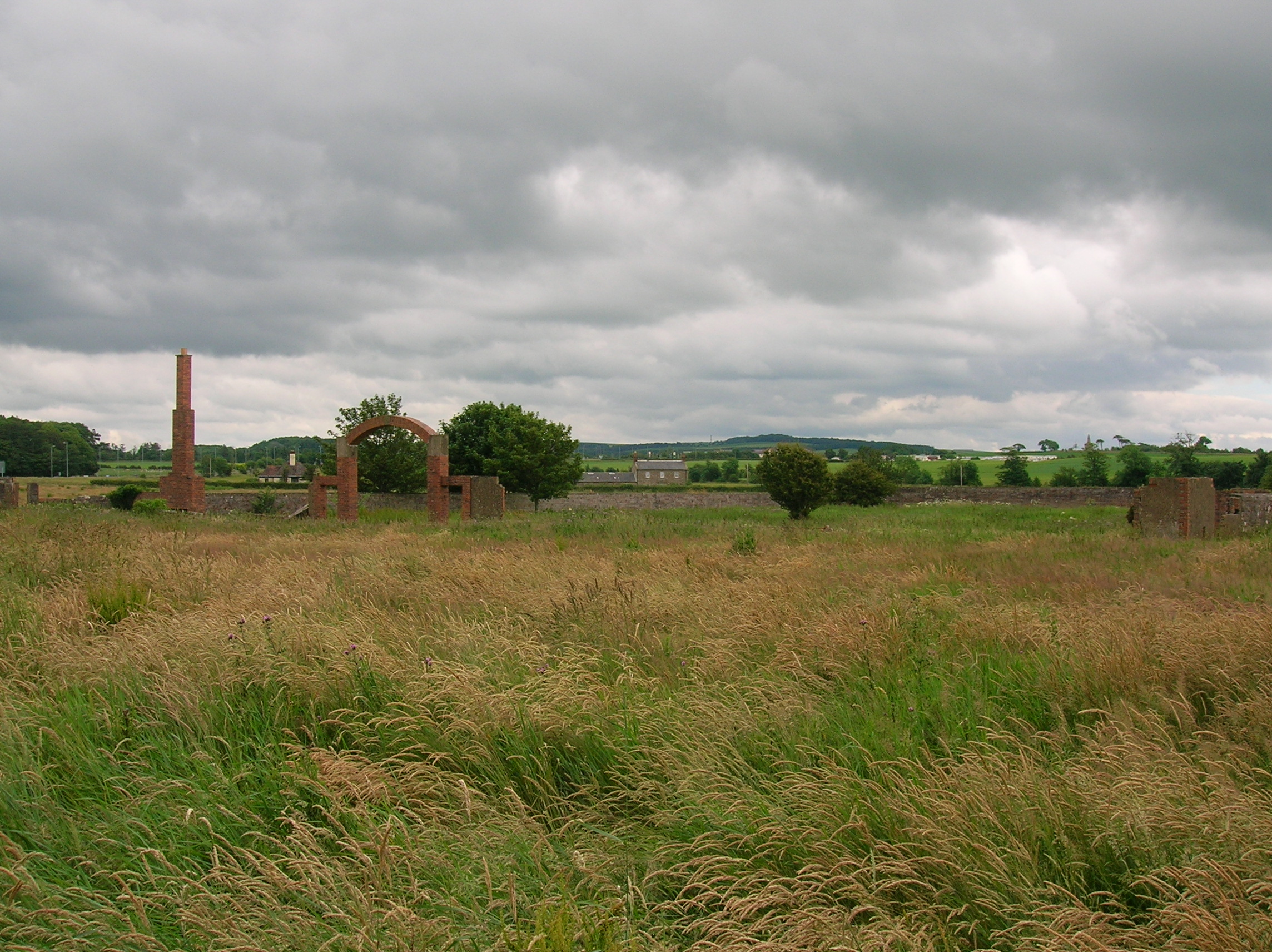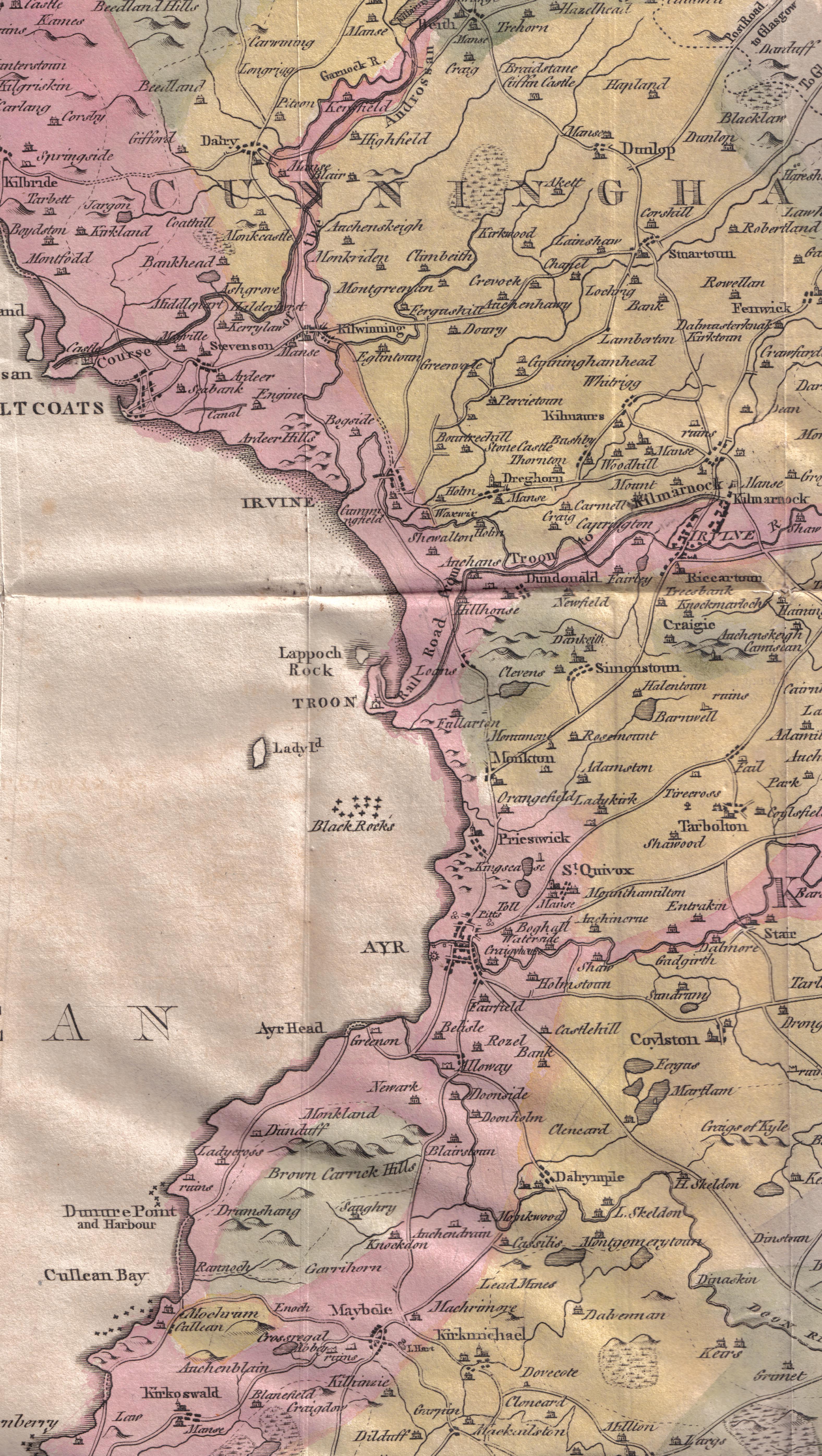Monkton, Ayrshire on:
[Wikipedia]
[Google]
[Amazon]
Monkton is a small village in the parish of
File:Old Windmill, Monkton, Ayrshire.JPG, old Windmill; also called the Dovecot.
File:MacRae Memorial, Monkton, Ayrshire.JPG, The MacRae of Orangefield Memorial above the Dutch Barn Caravan Park.
File:Fairfield Lodge, Monkton.JPG, Fairfield Lodge.
File:Monktonhead Lodge.JPG, Monktonhead Lodge. The driveway to Monktonhead House has been truncated by the bypass.
File:Monkton church, South Ayrshire.JPG, The south side.
File:Monkton church, Ayrshire.JPG, The 17th century northern transept.
File:Monkton church entrance, South Ayrshire.JPG, The ornate 17th century entrance to Saint Cuthbert church.
File:Cross at Monkton Church, Ayrshire.JPG, An ornate carved cross on the 17th century transept.
File:Weir of Adamton & Kildonan, Monkton.JPG, The mausoleum of William Weir of Adamton and Kildonan.
File:Angus of Ladykirk Aisle, Monkton, Ayrshire.JPG, The Angus of Ladykirk aisle.

 Colonel William Fullarton of that Ilk had owned Fairfield, however he sold it before he took up an appointment in
Colonel William Fullarton of that Ilk had owned Fairfield, however he sold it before he took up an appointment in
File:Fairfield Cemetery dedication, Monkton, Ayrshire.JPG, The 1835 dedication stone
File:Fairfield Memorial, Monkton, Ayrshire.JPG, The '2 falls' cemetery garden Christian dedication stone.
File:Fairfield Memorial inscription, Monkton, Ayrshire.JPG, The 'Jesus wept' gravestone and inscription of William and Diana Campbell
File:Fairfield cemetery mausoleum, Monkton, Ayrshire.JPG, The mausoleum
File:Fairfield Cemetery garden, Monkton, Ayrshire.JPG, The cemetery garden railings and walls frontage.
File:Fairfield Cemetery garden ornament, Monkton, Ayrshire.JPG, The base of an old sundial
File:Fairfield Lodge, Monkton.JPG, Fairfield Lodge

Video and commentary on the history of St Cuthbert's Church.Video and commentary on the old Fairfield House garden and burial garden.Video and commentary on the old Monkton Vaulted Tower Windmill.Video and commentary on the old Fairfield walled garden.Video footage of the James Macrae Monument.Video footage and commentary on James Macrae.Palace of Engineering.
{{authority control Villages in South Ayrshire
Monkton and Prestwick Monkton may refer to:
Places
;United Kingdom
*Monkton, Devon, England
*Monkton, Kent, England
*Monkton, Pembroke, Wales
* Monkton, South Ayrshire, Scotland
* Monkton, Tyne and Wear, England
* Monkton, Vale of Glamorgan, Wales
;Canada
*Monkton, Ont ...
in South Ayrshire
South Ayrshire ( sco, Sooth Ayrshire; gd, Siorrachd Àir a Deas, ) is one of thirty-two council areas of Scotland, covering the southern part of Ayrshire. It borders onto Dumfries and Galloway, East Ayrshire and North Ayrshire. On 30 June 2 ...
, Scotland. The town of Prestwick
Prestwick ( gd, Preastabhaig) is a town in South Ayrshire on the west coast of Ayrshire in Scotland about southwest of Glasgow. It adjoins the larger town of Ayr to the south on the Firth of Clyde coast, the centre of which is about south, an ...
is around south of the village, and it borders upon Glasgow Prestwick Airport
Glasgow Prestwick Airport () is an international airport serving the west of Scotland, situated northeast of the town of Prestwick in South Ayrshire and southwest of Glasgow. It is the less busy of the two airports serving the western part of ...
.
History
The village was originally known as Prestwick Monachorum.Love (2003), Page 231 ;The Windmill The tower-like building on the hill was originally awindmill
A windmill is a structure that converts wind power into rotational energy using vanes called windmill sail, sails or blades, specifically to mill (grinding), mill grain (gristmills), but the term is also extended to windpumps, wind turbines, and ...
and later a doocot. It is not to be confused with the structure on the opposite side of Prestwick Airport runway, the Shaw Monument, which was originally used by the then landowner to follow hunting with falcons on his land. This vaulted windmill dates from the 17th century, converted to a dovecot in the 18th century when conical slated roof slot for potence and fireclay nesting boxes added. It had two doorways, one blocked.
;Views of the area
Climate
Monkton has anoceanic climate
An oceanic climate, also known as a marine climate, is the humid temperate climate sub-type in Köppen classification ''Cfb'', typical of west coasts in higher middle latitudes of continents, generally featuring cool summers and mild winters ( ...
(Köppen Köppen is a German surname. Notable people with the surname include:
* Bernd Köppen (born 1951), German pianist and composer
* Carl Köppen (1833-1907), German military advisor in Meiji era Japan
* Edlef Köppen (1893–1939), German author and ...
: ''Cfb''). The nearest weather station to Monkton is at Prestwick Airport, around east, and is above sea level
Height above mean sea level is a measure of the vertical distance (height, elevation or altitude) of a location in reference to a historic mean sea level taken as a vertical datum. In geodesy, it is formalized as ''orthometric heights''.
The comb ...
.
Monkton old church
The church was dedicated to St. Cuthbert and dates from the 13th century.Close, Page 39 It was in use up until 1837, being suppressed by the Court of Teinds in 1834 and a new united church built near the Pow Burn. The poet Robert Burns' nephew, the Rev Thomas Burns was instrumental in the building of the new church and for a time it was locally known as "Burns's Folly". Burns also wrote the Statistical Account of the parish. It was in Monkton church thatBlind Harry
Blind Harry ( 1440 – 1492), also known as Harry, Hary or Henry the Minstrel, is renowned as the author of ''The Actes and Deidis of the Illustre and Vallyeant Campioun Schir William Wallace'', more commonly known as '' The Wallace''. This wa ...
's poem ''The Actes and Deidis of the Illustre and Vallyeant Campioun Schir William Wallace
''The Actes and Deidis of the Illustre and Vallyeant Campioun Schir William Wallace'' (Modern ), also known as ''The Wallace'', is a long "romantic biographical" poem by the fifteenth-century Scottish ''makar'' of the name Blind Harry, probably a ...
'' bases the story that William Wallace
Sir William Wallace ( gd, Uilleam Uallas, ; Norman French: ; 23 August 1305) was a Scottish knight who became one of the main leaders during the First War of Scottish Independence.
Along with Andrew Moray, Wallace defeated an English army a ...
went to pray, fell asleep and had an inspirational dream which revived his flagging resolve to rescue Scotland from Edward I
Edward I (17/18 June 1239 – 7 July 1307), also known as Edward Longshanks and the Hammer of the Scots, was King of England and Lord of Ireland from 1272 to 1307. Concurrently, he ruled the duchies of Aquitaine and Gascony as a vassal o ...
.
;Views of Monkton church and cemetery
Monkton station
Monkton station opened on 5 August 1859 as part of the Glasgow, Paisley, Kilmarnock and Ayr Railway, later theGlasgow and South Western Railway
The Glasgow and South Western Railway (G&SWR) was a railway company in Scotland. It served a triangular area of south-west Scotland between Glasgow, Stranraer and Carlisle. It was formed on 28 October 1850 by the merger of two earlier railway ...
. The station, now represented by the Prestwick airport fuel unloading sidings, was closed on 28 October 1940 by the London, Midland and Scottish Railway, therefore not even surviving into British Railways days. The closest railway station to the town today is Prestwick International Airport Railway Station
, symbol_location = gb
, symbol = rail
, image = Prestwick_Airport_Station_-_geograph.org.uk_-_458298.jpg
, caption = The view south at the station, showing the walkway over the A79 to the terminal ...
opened in 1994
Fairfield House
Trinidad
Trinidad is the larger and more populous of the two major islands of Trinidad and Tobago. The island lies off the northeastern coast of Venezuela and sits on the continental shelf of South America. It is often referred to as the southernmos ...
circa 1803. The property was held in 1851 by William Gunning Campbell at which time the house had a housekeeper, an undergardner, and two housemaids, in addition to the gardener and his laundress wife who lived at Fairfield Cottage. The property had a walled garden which survives as a ruin (2009) and a cemetery garden which remains in fair condition; the old Scottish unit of land measurement called a "fall" is recorded in the inscription. The last Campbell to live at the estate was W. G. Campbell and from the 1860s the property was run by trustees. Fairfield had been known as "Overmains" and had been a part of the lands of Monkton Castle, latterly known as Monkton House.
In the 1860s James Sinclair of Orangefield died and this estate was added to the of Fairfield. The associated farms were Fairfield Mains, Monktonmiln, Muirhouse, Orangefield and West Orangefield. Fairfield was sold in 1950 and demolished by the new owner who had planned to build villas and racing stables.
;Campbell family Cemetery Garden and Lodge
Orangefield House

James MacRae
Monkton House was rebuilt byJames MacRae
James Macrae (1677 – July 1744) was a Scottish seaman and administrator who served as the President of Fort St George from 1725 to 1730. He is known for naval exploits against the pirate Edward England and for reforming the administration of ...
(1684–1746) who had been the President
President most commonly refers to:
*President (corporate title)
*President (education), a leader of a college or university
*President (government title)
President may also refer to:
Automobiles
* Nissan President, a 1966–2010 Japanese ful ...
of Madras
Chennai (, ), formerly known as Madras ( the official name until 1996), is the capital city of Tamil Nadu, the southernmost Indian state. The largest city of the state in area and population, Chennai is located on the Coromandel Coast of th ...
, 1725–1730 and came back with a fortune amounting to £100,000. He purchased the estate of Monkton in 1736Cuthbertson, Page 33 and renamed the house 'Orangefield' as he was a great admirer of William of Orange, William III William III or William the Third may refer to:
Kings
* William III of Sicily (c. 1186–c. 1198)
* William III of England and Ireland or William III of Orange or William II of Scotland (1650–1702)
* William III of the Netherlands and Luxembourg ...
; he died here in 1746Love (2005), Page 53
The MacRae monument
The MacRae Monument or 'Orangefield Family Burial Ground' near the village was built around 1750 by John Swan and is of the Corinthian style, with alcove, urns and obelisk. The site has been referred to as the Orangefield family burial-plot.References
;Notes ;Sources # Allan, Shiela et al. (2003). ''Historic Prestwick and its surroundings''. Ayr Arch & Nat Hist Soc. . # Close, Robert (1992), ''Ayrshire and Arran: An Illustrated Architectural Guide''. Pub. Roy Inc Arch Scot. . # Cuthbertson, David Cuningham (1945). ''Autumn in Kyle and the Charm of Cunninghame''. London : Jenkins. # Harvey, William. ''Picturesque Ayrshire.'' Dundee : Valentine & Sons. # Love, Dane (2003). ''Ayrshire : Discovering a County''. Ayr : Fort Publishing. . # Love, Dane (2006). ''Lost Ayrshire : Ayrshire's Lost Architectural Heritage.'' Edinburgh : Birlinn Ltd. . # McClure, David (2002). ''Ayrshire in the Age of Improvement.'' Ayrshire Monographs 27. Ayr Arch & Nat Hist Soc. . # Shaw, James Edward (1953). ''Ayrshire 1745-1950. A Social and Industrial History of the County.'' Edinburgh : Oliver & Boyd. # Strawhorn, John (1994). ''The History of Prestwick''. Edinburgh : John Donald. .External links
Video and commentary on the history of St Cuthbert's Church.
{{authority control Villages in South Ayrshire